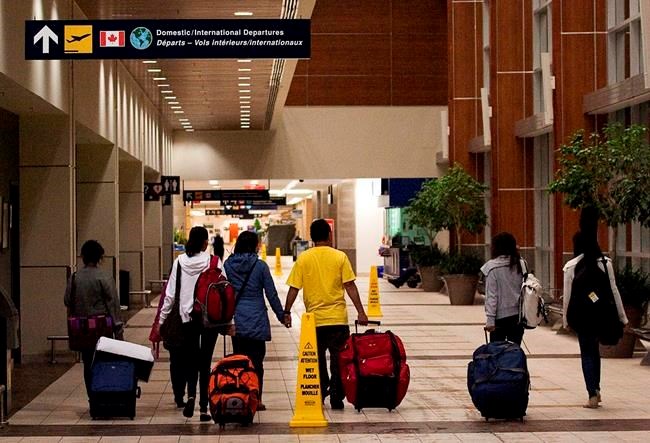FREDERICTON — Chijioke Amadi has called Prince Edward Island home for the past 15 years since arriving from Nigeria.
He landed in the province in 2007, when he was 21, to study engineering at the University of Prince Edward Island. His road hasn't always been easy.
In his third year, Amadi was late paying his tuition and was asked to leave the exam hall. "I got kicked out of school, my final exam," he said in a recent interview.
He went to Alberta for a few years to work and save, before returning to the Island to finish his classes and put down roots. He now has multiple volunteer positions and jobs including a business, Wheelie Bin Doctors, that washes and sanitizes garbage cans.
"I chose to stay in P.E.I.," Amadi said. "P.E.I. has always treated me well. P.E.I. felt like home for me. Alberta felt like work for me."
Census data released Wednesday shows the Atlantic provinces of Newfoundland and Labrador, Nova Scotia, Prince Edward Island and New Brunswick have become magnets for immigrants like Amadi.
The share of immigrants to Canada who are settling in the region has tripled, rising to 3.5 per cent last year from 1.2 per cent in 2006.
Patrick Brannon, a senior researcher at the Atlantic Provinces Economic Council, said Nova Scotia and New Brunswick are seeing the biggest growth in immigration, with steady increases between 2016 and 2021.
With the overall population in these areas aging, he said targeted immigration to offset the labour shortage has paid off. Most of the newcomers are from China and India, he added.
But there are fears the gains could be short-lived, as critical services haven't kept pace with the growth. High rents, a lack of sufficient housing and an alarming shortage of doctors and nurses that has caused hospitals and emergency rooms to cut hours have become a recurring lament across the region.
Most of the people coming in "may struggle a little bit" to get a doctor with about 300,000 Atlantic Canadians on wait lists at the moment, Brannon said.
"That is a challenge that a lot of people in the (region) are facing, so it's a very big concern."
Jeffrey Reitz, a professor at the University of Toronto's Munk School of Global Affairs and Public Policy, said provincial initiatives to attract newcomers are one reason more people are looking east.
"The real challenge for some of these non-traditional destinations is not so much that they get immigrants, but whether they actually are able to keep those immigrants," he said.
Reitz called the lack of services and the growing population a "chicken and egg" problem.
"One of the reasons for encouraging immigration is to stimulate the economy, to create more wealth so that there will be more of those kinds of services," he said. "If people don't come because of lack of the services, that's not going to solve the problem."
Moshe Lander, an assistant professor at Dalhousie University’s economics department, said one of the problems with the housing market is that the zoning laws are too restrictive and make it difficult for people who want to build to accommodate tenants.
People in cities such as Halifax want to protect the value of their properties, which makes them favour such laws, he noted.
"Of course, the cost is borne by low-income people, low-skilled people, generally speaking: immigrants who are coming in, but don't necessarily have the financial means to get on that housing ladder," Lander said.
Governments should also send the signal that universities have to train doctors and nurses to meet the needs, he said.
Reitz highlighted another problem faced by many immigrants: a lack of jobs that is in keeping with their skill set, which, when combined with high real estate costs and a shortage of services, could lead some to leave the country.
In 2021, about 23 per cent of Canada's population counted themselves as a landed immigrant or permanent resident. Based on recent trends, Statistics Canada said immigrants could represent 34 per cent of the country's population by 2041.
Many recent arrivals struggle to maintain an economic foothold long enough to get a job that can provide for their children, Reitz said. "It's becoming a more serious concern all the time."
While the past two or three decades have seen large numbers of people come into the country, many have reconsidered their decision, he said.
"About one-third of those people actually have left the country after a period of four or five years."
Unless "big issues" like affordable housing and public services are addressed, the power of immigration to fuel economic growth will be dulled, Reitz said.
Amadi said he worries about the lack of housing and health-care services. But when asked if he sees himself living in P.E.I. in five years, he laughed.
"That's a loaded question," he said. "A friend of mine always says tomorrow is pregnant. You don't know what it's got. So, do I see myself in P.E.I. in the next couple years? Maybe."
This report by The Canadian Press was first published Oct. 26, 2022.
Hina Alam, The Canadian Press


